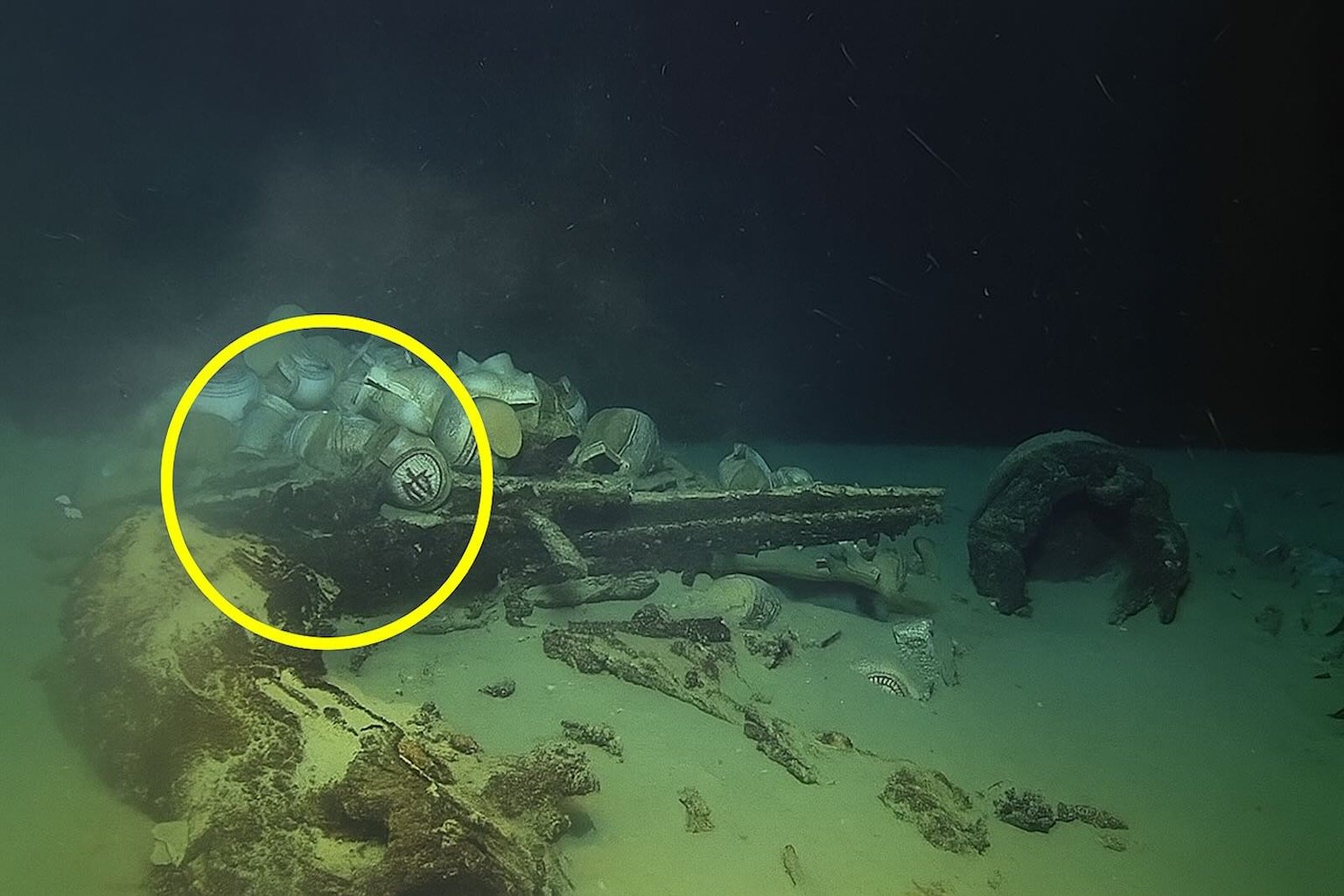The French Navy has unveiled an extraordinary maritime discovery — a 16th-century merchant ship lying 2,567 meters below the waves off the coast of Saint-Tropez. Temporarily named Camarat 4, this find is more than just a piece of history. It marks a new French record for deep-sea archaeology and provides a rare window into Renaissance-era trade and daily life.
A Ship Frozen in Time Beneath the Mediterranean
At over 2,500 meters deep, Camarat 4 ranks among the deepest shipwrecks ever located worldwide. For comparison, this wreck now stands as the second-deepest archaeological discovery on record, surpassed only by the USS Samuel B. Roberts, found at nearly 7,000 meters in the Philippine Sea.
What makes this French find so unique is its remarkable state of preservation. The abyssal environment of the Mediterranean — with its near-freezing temperatures, lack of strong currents, and absence of destructive marine organisms — has acted as a natural vault. The 30-meter-long vessel appears almost untouched by time, shielded from the usual decay that erodes wooden ships in shallower waters.
Yet even in this pristine environment, traces of modern human activity are visible. Plastic bottles, discarded fishing nets, and beverage cans have been found scattered near the wreck. These stark juxtapositions remind us of both the endurance of history and the global reach of today’s pollution.
Renaissance Cargo: A Glimpse into Mediterranean Trade
The artifacts found on board paint a vivid picture of 16th-century commerce and culture. Archaeologists catalogued nearly 200 ceramic jugs, decorated with floral patterns, Christian crosses, and the sacred “IHS” monogram — a reflection of the era’s deep religious influence.
But the ship carried more than just art. Iron bars, carefully wrapped in plant fibers to resist moisture, were discovered in large quantities. In the Renaissance, iron was the backbone of progress — as essential then as lithium batteries are today. It fueled agriculture, construction, weapon-making, and trade across Europe.
Other key finds include:
-
A fully preserved anchor — vital for maritime navigation.
-
A cannon, evidence that merchant vessels of the time often had to defend themselves.
-
Tableware and daily-use ceramics, giving clues to everyday life on board.
Each item retrieved from the wreck is a fragment of Renaissance society, revealing how interconnected Mediterranean civilizations were through trade and cultural exchange.
How Technology Made This Discovery Possible
The success of the Camarat 4 mission is a testament to modern technology and collaboration. The French Navy partnered with the DRASSM (Department of Underwater and Submarine Archaeological Research) to explore the site.
Using remotely operated vehicles (ROVs) equipped with 4K cameras, 3D scanners, and articulated robotic arms, researchers were able to map, film, and delicately retrieve artifacts without disturbing the wreck. Precision tools allowed experts to lift centuries-old ceramics and metals intact — a process unthinkable in earlier decades of maritime archaeology.
Once brought to the surface, the artifacts undergo specialized conservation treatments in laboratories. Detailed digital scans and 3D reconstructions ensure that every object is preserved virtually, even as physical conservation continues. This technological leap means future generations of researchers will still be able to study the shipwreck in detail.
The Global Context of Deep-Sea Discoveries
While Camarat 4 sets a new French record, deep-sea archaeology has been gaining momentum worldwide. The most notable benchmark remains the USS Samuel B. Roberts (“Sammy B”), a U.S. destroyer that sank in 1944 during World War II. Located at 6,895 meters in 2022, it remains the deepest wreck ever found.
The discovery of Camarat 4 now joins this exclusive list of underwater milestones, underlining humanity’s growing ability to reach extreme depths once thought inaccessible.
However, researchers must also contend with natural risks. Underwater volcanic systems and seismic activity can threaten both ongoing missions and long-term preservation of sites. Monitoring these geological hazards — such as the seismic swarms recorded near Italy’s Campi Flegrei — has become part of archaeological planning.
What This Means for History and Heritage
The Camarat 4 wreck is not just an archaeological trophy — it’s a story of resilience, commerce, and culture preserved beneath the sea. It reveals forgotten trade routes, Renaissance religious influences, and the economic priorities of the 16th century.
Perhaps most importantly, it shows how collaboration between science, history, and technology can expand our understanding of the past. Every jug, anchor, and iron bar recovered provides new data for historians seeking to reconstruct how goods, ideas, and people moved across the Mediterranean 500 years ago.
Looking Ahead
France’s newest maritime treasure raises as many questions as it answers. Who owned this vessel? What was its intended destination? Was it lost to a storm, piracy, or human error? As research continues, Camarat 4 may help piece together not just a single ship’s fate, but also the broader story of Renaissance maritime life.
The find also highlights a pressing modern dilemma: while extreme depths preserve the past, even these remote environments are no longer free from human impact. The presence of plastic waste near a centuries-old wreck is a sobering reminder of how today’s choices will shape what future archaeologists discover.
The Camarat 4 discovery marks a turning point for French maritime archaeology. At more than 2,500 meters deep, this Renaissance merchant ship is a silent witness to centuries of history — one that modern technology has finally brought back into the light.
As research unfolds, this find may stand as one of the most significant underwater archaeological discoveries of the decade. It’s not just about the artifacts pulled from the abyss; it’s about the story they tell, the networks they reveal, and the cultural bridges they remind us once existed across the Mediterranean.
